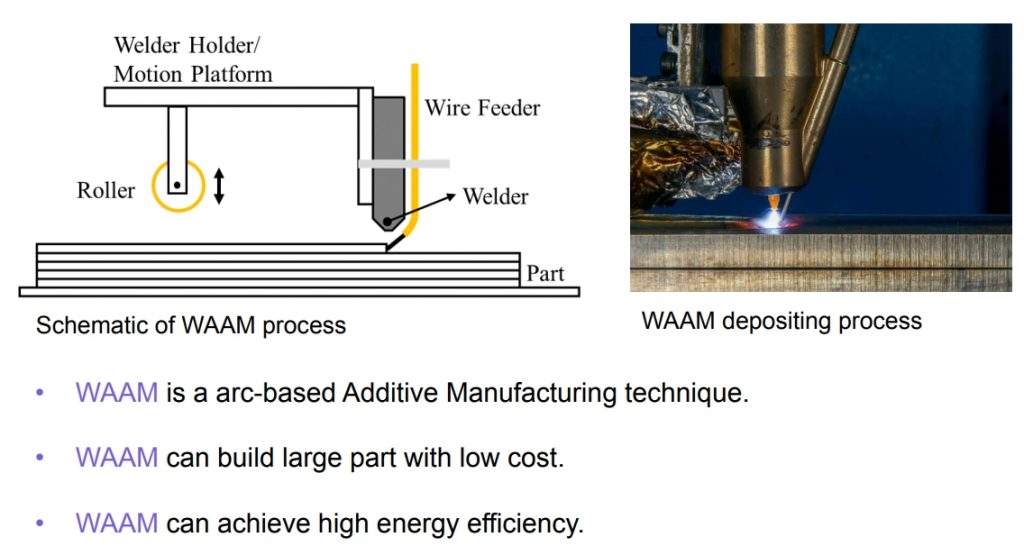Stelia, the French-based company has unveiled the first printed self-reinforcing fuselage panel to demonstrate the potential of additive manufacturing: cheaper, lighter and more environmentally-friendly components. Aerospace manufacturing is a complex, expensive, and time consuming affair that involves hundreds of thousands of parts, which all need to be fitted together respecting the stricted safe requirments. An aircraft Fuselages could be seen as tubes of thin-rolled aluminum alloy that couldn’t hold its shape against its own weight. For that reason, the hull of an aircraft is reinforced by a spider’s web of stiffeners that act as a supporting skeleton. Working in conjunction with Constellium aluminum, engineering school Centrale Nantes and the CT Ingénierie group, Stelia has come up with a much simpler fuselage panel that incorporates its own reinforcements. The one-piece, 1 m² metal demonstrator was created by a programmed robotic tool using a process called Wire Arc Additive Manufacturing (WAAM). This is a 3D printing techniques that melt strands of aluminum and deposit it to build up an object. The aluminum wire is melted by an electric arc, which means the stiffeners can be directly printed on instead of being added later.


Stelia hopes that the new panel will show the potential for large-scale additive manufacturing, which will make constructing complex components much simpler. In addition, the process has less environmental impact, allows more flexible design, integrates various functions in a single part, uses less material, and provides saving both in weight and costs. “With this 3D additive manufacturing demonstrator, Stelia Aerospace aims to provide its customers with innovative designs on very large structural parts derived from new calculation methods,” says Cédric Gautier, CEO of Stelia Aerospace. “Through its R&T department, and thanks to its partners, Stelia Aerospace is therefore preparing the future of aeronautics, with a view to develop technologies that are always more innovative and will directly impact our core business, aerostructures.” The panel was constructed as part of the DEveloppement de la Fabrication Additive pour Composant TOpologique (DEFACTO) project to demonstrate the viability of large-scale 3D printing in aerospace design and manufacturing. The weakness of this technique are distortions and residual stress (Shrinkage and uneven cooling rate are the main reasons for distortion and residual stress), too Too many factors are involved in the WAAM process, such as welding voltage, welding current, feeding speed, ambient temperature, protecting gas flow rate, etc.
